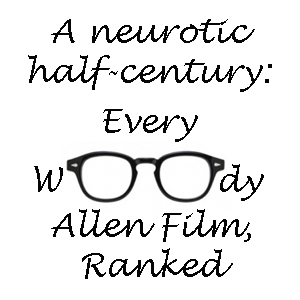In 2009, I predicted – not particularly daringly – that we’d get another “Harry Potter” novel someday. Seven years later, while that prediction isn’t precisely on point, it’s in the ballpark: This year saw the book release of the stage play “Harry Potter and the Cursed Child” – based on ideas by J.K. Rowling – and now we have Rowling’s screenwriting debut, “Fantastic Beasts and Where to Find Them,” the first of a five-film saga.
“Fantastic Beasts” marks the first “Potter”-verse film where we’re not watching with half a mind thinking about the faithfulness of the adaptation. Although there was a book by the same name published in 2001, it’s an in-universe guidebook by Newt Scamander.
As we join the action in this movie, Scamander (Eddie Redmayne) is traveling the world researching for his book. But everything we see is a brand-new story set in 1920s New York, seven decades and an ocean away from the proper “Potter” saga.
New York City in the Twenties is a tasty backdrop for “Fantastic Beasts” for two reasons. For one, it looks wonderful. “Potter” veteran Stuart Craig, James Hambidge and the other members of the production design team will rack up well-deserved awards; I felt fully immersed in both the magical and historical aspects of this world. Director David Yates, who helmed the last four “Potter” pictures, further makes us feel at home.
For another, the Prohibition era in the no-maj (a.k.a. muggle) world is paralleled in the magic world: Breeding of magical beasts is outlawed by MACUSA (the Magical Congress of the USA). Just as anti-prohibitionists argue that people who enjoy alcohol (or marijuana) shouldn’t necessarily be locked up, Newt contends that magical creatures aren’t necessarily dangerous.
Anti-magic sentiment in the Big Apple’s no-maj population is also a concern, with shifty foster mom Mary Lou (Samantha Morton) pushing for “a second Salem.” While she’s not particularly successful at stirring up hatred among the masses (I’m kind of glad that Rowling didn’t aim for that modern parallel, actually), she has her foster children – Modesty, Chastity and Credence – passing out leaflets and toeing the party line, encouraged by belt whippings if necessary.
Scamander – a former student of Dumbledore (suggesting that the professor had a magically enhanced lifespan) at Hogwarts – gets caught up in this conflict, of course, but initially he’s just trying to catch the beasts that have escaped from his magic suitcase. This is quite a lot of fun – at least on the initial viewing. The breakout star is the niffler, essentially a hedgehog with a platypus beak with a penchant for stealing valuables. It’s also nice to see bowtruckles – essentially walking twigs, invented for the original “Potter” series – get some serious screentime. One bowtruckle inhabits Newt’s overcoat a la Ron’s rat, Scabbers.
“Fantastic Beasts” has plenty of parallels to the original “Potter” series (it’s fun to see curmudgeonly house elves again, for example), but it feels like its own thing. While the idea that “Beasts” is the adult entry in the “Potter”-verse is overstated (it mostly feels like a kids’ movie), it does indeed feature a brand-new cast of 30-somethings, and they make for an appealing team.

Redmayne, with a lopsided smirk that makes it clear he enjoys his gig as a researcher and collector of magical creatures, is a likable lead. Alison Sudol, as Queenie, is also easy to watch, and the way she adores the chubby prospective baker Kowalski (Dan Fogler) is cute. Queenie’s sister Tina (Katherine Waterston) is oddly underexplored: She has been kicked out of the Aurors for unknown reasons, but is still employed by MACUSA. I do like the understated budding romance between Newt and Tina, but I’d like to see her backstory fleshed out more in the sequels.
“Fantastic Beasts” is mostly the foursome’s madcap attempts to chase down the escaped creatures, plus a tour of Scamander’s suitcase. It’s enjoyable enough the first time through, even if it is essentially a live-action version of paging through an “Art of Fantastic Beasts and Where To Find Them” coffee-table book.
The plot isn’t that much different from Harry’s saga, and since it’s set before those stories, it’s unlikely that anything can happen that’s so monumental we’d wonder why it wasn’t mentioned in the proper “Potter” saga. Then again, in a world that allows for time travel and mind-erasing obliviate spells, the possibilities might be more wide open than I think.

